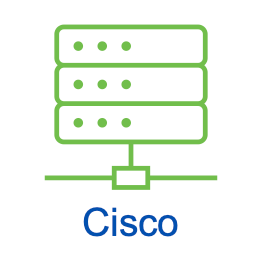CBROPS

Class Overview
Cisco's Understanding Cisco Cybersecurity Operations Fundamentals
, or CBROPS, training class teaches you security concepts, common network and application operations and attacks, and the types of data needed to investigate security incidents.
This training teaches you how to monitor alerts and breaches, and how to understand and follow established procedures for response to alerts converted to incidents. Through a combination of lecture, hands-on labs, and self-study, you will learn the essential skills, concepts, and technologies to be a contributing member of a Cybersecurity Operations Center, or SOC, including understanding the IT infrastructure, operations, and vulnerabilities.
This course helps you prepare for the Cisco Certified CyberOps Associate certification exam, and the role of an entry or junior level Cybersecurity Operations Analyst in a SOC.
Class Details
Objectives
After taking this training, the student should be able to:
- Explain how a Security Operations Center (SOC) operates.
- Describe the different types of services that are performed (from a Tier 1 SOC analyst’s perspective).
- Explain Network Security Monitoring (NSM) tools that are available to the network security analyst.
- Explain the data that is available to the network security analyst.
- Describe the basic concepts and uses of cryptography.
- Describe security flaws in the TCP/IP protocol and how they can be used to attack networks and hosts.
- Understand common endpoint security technologies.
- Understand the kill chain and the diamond models for incident investigations.
- Understand the use of exploit kits by threat actors.
- Identify resources for hunting cyber threats.
- Explain the need for event data normalization and event correlation.
- Identify common attack vectors.
- Identify malicious activities.
- Identify patterns of suspicious behaviors.
- Conduct security incident investigations.
- Explain the use of a typical playbook in the SOC.
- Explain the use of SOC metrics to measure the effectiveness of the SOC.
- Explain the use of a workflow management system and automation to improve the effectiveness of the SOC.
- Describe a typical incident response plan and the functions of a typical Computer Security Incident Response Team (CSIRT).
- Explain the use of Vocabulary for Event Recording and Incident Sharing (VERIS) to document security incidents in a standard format.
Prerequisite Knowledge Advisory
Before taking this class, you should have:
- Familiarity with Ethernet and TCP/IP networking.
- Working knowledge of the Windows and Linux operating systems.
- Familiarity with basics of networking security concepts.
Required Exam for CBROPS Certification
Exam: 200-201
Proctor: PearsonVUE
Recertification: 3 years
CBROPS Training Class Outline
Defining the Security Operations Center
Understanding Network Infrastructure and Network Security Monitoring Tools
Exploring Data Type Categories
Understanding Basic Cryptography Concepts
Understanding Common TCP/IP Attacks
Understanding Endpoint Security Technologies
Understanding Incident Analysis in a Threat-Centric SOC
Identifying Resources for Hunting Cyber Threats
Understanding Event Correlation and Normalization
Identifying Common Attack Vectors
Identifying Malicious Activity
Identifying Patterns of Suspicious Behavior
Conducting Security Incident Investigations
Using a Playbook Model to Organize Security Monitoring
Understanding SOC Metrics
Understanding SOC Workflow and Automation
Describing Incident Response
Understanding the Use of VERIS
Understanding Windows Operating System Basics
Understanding Linux Operating System Basics


